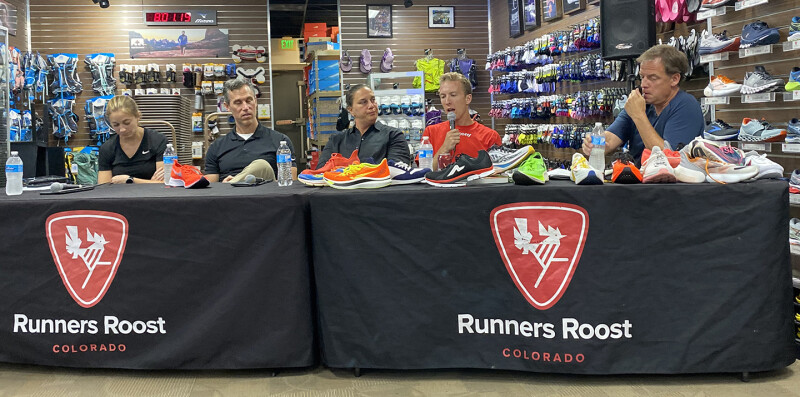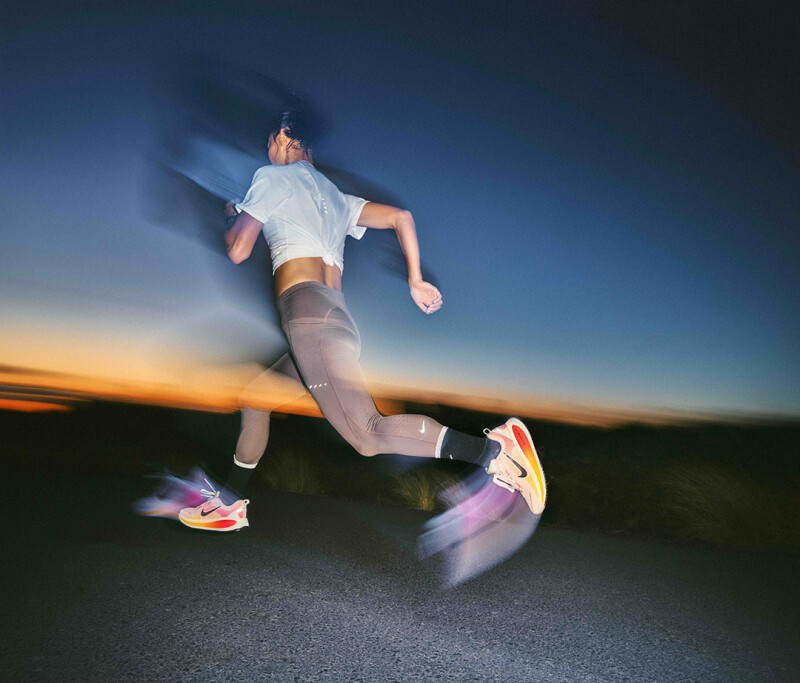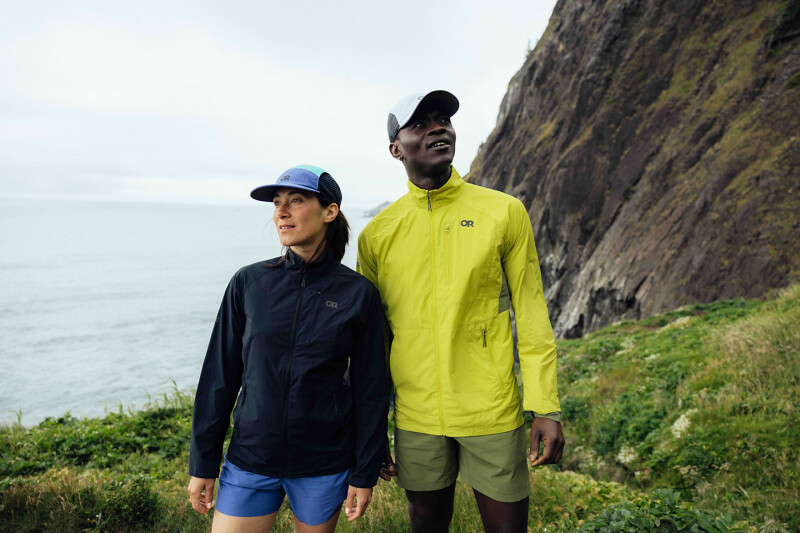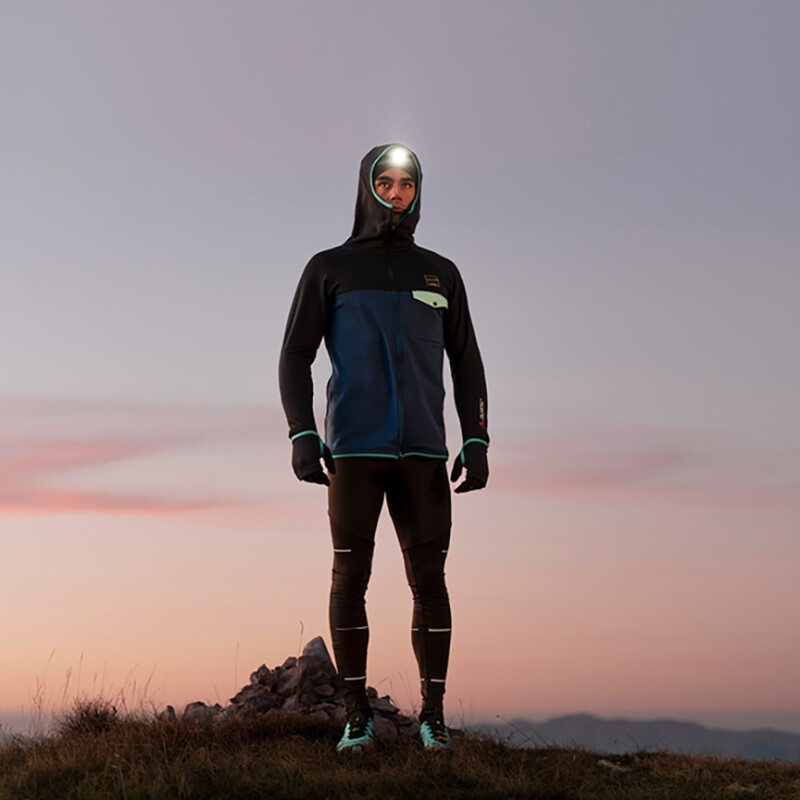As live, in-person marathons begin to make a comeback across the U.S., there will be a lot of runners buying new shoes for their race day quest to chase new personal best times.
But does the shoe-buying public know which shoes to buy? Over the past year and a half, every brand launched at least one or two models of carbon-fiber-plated “super shoes.” However, because the COVID-19 pandemic forced the cancellation of most races, the majority of recreational runners weren’t training for a big race and therefore weren’t spending their money on the expensive race-day shoes that have gained notoriety.
That’s why a huge upswing in the sales of shoes such as the Saucony Endorphin Pro 2 ($200), Hoka One One Carbon X 2 ($180), Nike Vaporfly Next% 2 ($250), Brooks Hyperion Elite 2 ($250), Skechers GoRun Speed Elite ($190), ASICS Meta SkySpeed Edge ($250), On Cloudboom Echo ($270) and Adidas Adizero Pro 2 ($220) are expected in the coming months.
To help educate and inspire runners about the revolutionary new shoes, the Denver Runner’s Roost store hosted an evening fun run on July 21 followed by an engaging 90-minute panel discussion on the topic called “The Frontier of Speed.” Saucony and Hoka One One offered demo models for wear-testing on the run, which was followed by a compelling store video that told the backstory of how the shoe’s burst onto the scene from 2017-2020.
The panel included Andrea Paulson, director of product engineering at Saucony; Parker Stinson, a 29-year-old Boulder-based professional runner for Saucony; respected running gait expert Dr. Nick Studholme DC; and athletic trainer and strength and conditioning coach Samantha Cocca MS, ATC, CSCS of Studholme Chiropractic Center of Excellence in Denver, a facility that has one of the most sophisticated running gait labs in the country.
After a brief discussion of what super shoes and the new design paradigm are all about, the conversation ranged from the emergence of modern midsole foams and how running form changes in super shoes to the unexpected recovery effect of super shoes and the potential dangers of daily training in the new racing models. About 50 people attended the event.
“Everyone wants to talk about the plate, but it’s definitely the foam that is the secret sauce, the big difference maker,” Stinson said. “Yes, the plate is an important part, but having run in 25 or 30 prototypes over the past couple of years, it’s pretty clear that different foams produce different results.
“There were times when I would get two or three models at once and I would switch off between mile repeats and you could tell when one of the models was really providing a huge impact,” he added.
Stinson should know. Before Saucony publicly launched its Endorphin Pro in early 2020, he ran some incredibly fast times in the prototypes. Most notably, he set an American record for 25K (1:13.48, or a 4:45 mile pace for 15.53 miles) en route to a winning a U.S. title in May 2019, then followed that up with a 2:10:53 marathon PR in Chicago later that year.
Paulson agreed that the foam is what makes the super shoes special, referring to a recent study from University of Massachusetts-Amherst kinesiology professor Wouter Hoogkamer, the researcher who worked on some of the initial studies of Nike’s original Vaporfly 4% shoes while at the University of Colorado, that suggested the impacts of the longitudinal stiffness as it relates to running economy is negligible in super shoes.
Paulson said the emergence of new types of foams and new ways of creating foam midsoles has entirely changed the game in running shoes forever. That includes injected-EVA, super critical foaming processes and the development of extruded EVA, as well as olefin-block copolymers (OBC), thermoplastic urethanes (TPU) and polyether block amides (PEBA) materials.
While traditional EVA foams return 50 to 70 percent of a runner’s energy, TPU foams have been tested at 80 to 85 percent energy efficiency, with PEBA foams above 90 percent energy efficiency. Saucony’s ultralight and super-responsive PowerRun PB foam midsoles in its Endorphin Pro 2 are made from an extruded PEBA-based foam in which beads of the material are compressed together so they can recoil and rebound against each other.
“We tested some of these foams in 2012 and found it to have phenomenal energy return, but, at the time, we couldn’t figure out how to make a shoe out of it that wasn’t astronomical in price,” Paulson said. “A lot of these foams and materials have been around in everyday life, but making them into running shoes with carbon-fiber plates hasn’t been an easy process.”
Although Adidas, Reebok, Zoot and a small start-up brand called Ampla developed shoes with carbon-fiber plates between 1990 and 2014, but they weren’t effective because they were paired with basic EVA foams. It wasn’t until Nike secretly put its original Vaporfly Elite shoes on runners in the 2016 U.S. Olympic Trials Marathon and 2016 Olympic marathon in Rio de Janeiro did the performance values of the new shoe design paradigm really begin to make an impact.
Nike eventually brought its shoes to the public in 2017, the same year it launched its Breaking 2 event in Monza, Italy, in which Eliud Kipchoge (2:00:25), Zersenay Tadese (2:06:51) and Lelisa Desisa (2:14:10) unsuccessfully tried to break the 2-hour marathon barrier for the first time.
By 2018-2019, Hoka had released the EVO Carbon Rocket and the CarbonX and Nike had launched its Vaporfly Next% and its Air Zoom Alphafly — the shoe in which Kipchoge wore in October 2019 to run 1:59:40 in a time trial in Vienna, Austria. But it wasn’t until early 2020 – after World Athletics released its first regulations – that Saucony, Brooks, New Balance, Skechers, ASICS, Adidas and On released their racing shoes with carbon-fiber plate to the public.
Now every brand has released a second edition of their original shoe, as well as slightly de-tuned models with nylon or plastic plates to create more moderately stiff shoes — such as the Saucony Endorphin Speed 2, which is considered a “more democratic” approach to the foam/plate design that is more approachable to recreational runners.
So does that mean one shoe is better than another? How can a runner know which shoe is best? Those are simplistic questions that have complicated answers, the panel agreed.
Runners aren’t loading the foam/plate combination the same way, Paulson said. All of the shoes are built s with slightly different materials, resulting in slightly different results for any given runner. Stinson is a generally forefoot striker, while Jared Ward, another Saucony runner, is predominantly a heel-striker and the lab results of each runner during the prototyping process was vastly different, she added.
“The evolution of shoes is interesting because people come into a store wanting to be in a shoe because it looks a certain way or has a certain reputation, but it may or may not be the best shoe,” Studholme warned.
He and Cocca pointed out that the stiffness of the plates reduces the need for a runner’s toes to flex and stiffen and instead puts more emphasis on the soleus muscles in the calf. But studies have shown that the shoes produce increased loading races and allow a runner to generate more powerful propulsion at the toe-off phase, so it’s clear that super shoes can help a runner run a race more efficiently and faster.
Their advice to anyone who wants to run in super shoes is that they better be doing drills to strengthen their planter fascia and their toes. They also cautioned runners not to wear super shoes every day in training – and maybe just twice a week – if only because running in such stiff shoes could weaken the muscles under their feet and toes if the shoe is providing all of the propulsion.
If a runner doesn’t have that strength, it can lead to numbness or tingling in the forefoot and toes and it can accentuate other stresses and injuries elsewhere in a runner’s body, Cocca said.
“It’s great when you’re running in the shoes, but the second that you’re not running in the shoes you’re just creating a stress you’re hiding in these shoes,” she said. “From our perspective, you need to strengthen your toes because we want you to be able generate your own force through the shoes so you can generate that much more propulsion.”
So what’s the best way for a consumer to find the right marathon racing shoes? The panelists suggested it’s best to visit a reputable local running shop, try on many models and start with the approach from now-retired University of Calgary researcher Benno Nigg, who suggested that if a shoe feels good when you lace it up, that’s a good place to start.
Injuries aren’t caused by shoes, Studholme said, but by a lack of strength or fitness and doing too much training too soon.
“I am a firm believer that good running technique exists and running well is important, but there are a lot of people who don’t run well,” he said. “Most runners just want to run, but doing strength and condition work and drills are essential to good running technique and running well and running fast.”







